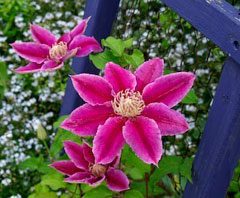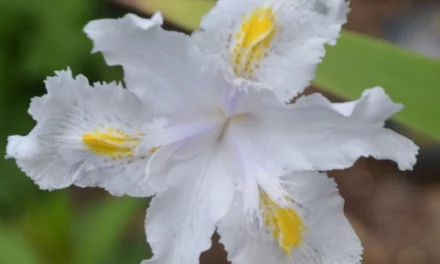 The signature plant in many southern landscapes is Azalea. These are southerners’ answer to peonies and lilacs even if they don’t smell good. They are beautiful and as varied as any group of plants, but when are they also Rhododendrons?
The signature plant in many southern landscapes is Azalea. These are southerners’ answer to peonies and lilacs even if they don’t smell good. They are beautiful and as varied as any group of plants, but when are they also Rhododendrons?
Michael Dirr author of Manual of Woody Landscape Plants says that, “1) True Rhododendrons are usually evergreen”. . . 2) Have 10 stamens, and their leaves are often scaly, 3) Azaleas are mostly deciduous . . . have 5 stamens, leaves are never dotted with scales and are frequently pubescent. 5) Azalea flowers are largely funnel-form while rhododendron flowers tend to be bell-shaped.”
What we call Azaleas are cultivars and hybrid types of Rhododendron. Most commonly found in the Lowcountry of South Carolina are the southern indica type, Kurume and Satsuki hybrids. Native or deciduous azaleas are also found from Florida to the piedmont and upper coastal plain of SC. For the most part these plants enjoy bright light, morning sun, and well drained acidic soils. Given the choice they also prefer to grow as understory plantings around pines and hardwoods. Indicas are naturally spreading and can get very big, 10’-12’, when given adequate moisture and afternoon shade. The flower blooms are set in the late summer so pruning is best done after they bloom in spring but not after July. The smaller hybrid forms, Satsuki and Kurume may be 2’-4’. Kurume translates loosely to blooming in May. There are supposed to be Azaleas that bloom every month of the year and may be named for the month of bloom. These small hybrids are better suited to smaller landscapes or foundation plantings if there isn’t too much moisture. Check the roof angle, light and gutters to make sure that they won’t get too much rain water coming off the roof. These shallow rooted plants enjoy even moisture but not soggy feet.
The right time to buy azaleas is when they are in bloom. No surprises because some of the orange reds, pinks and salmons are quite lovely massed together, but the colors should complement, not fuss with each other. The bloom time is short, only about 2-3 weeks, and that can be further shortened by wind or rain. They should be planted in morning sun or light shade with plenty of organic matter (leaf mold or compost). Dig a hole twice as wide as the container that you brought it home in. Water thoroughly, tamp the soil, and water it again. Oak leaves and pine needles are great mulches, because they tend to lower the pH or acidify the planting beds, which is perfect for ericaceous plants. By having several different types of hybrid or native azaleas you can extend the bloom season. Water is more important to your new plantings than fertilizer. Using compost and organic amendments will help to hold moisture in sandy soils and will also help to loosen compacted clay soils. There is also an added benefit of available nutrients which are slowly released and non-burning to tender roots. After the first season you will want to lightly sprinkle some type of acid forming slow release fertilizer. Remember the fertilizer company wants to sell more products, so two half-rate applications in April and August during the growing and bud formation will be more helpful than all of it at once.
There are about 9 species of deciduous native azaleas available in the nursery trade now. They are a lot easier to obtain from local garden centers and mail order companies than in the past. Many are being grown by reputable nurseries and enthusiasts. Their habitats may be disappearing; it is incorrect to dig these beauties out of the woods, except if they are being threatened by herbicides, bulldozers, or bush hogs. The natives are difficult to transplant, probably because of a mycorrhizal association in the soil.
There is such a great love for Azaleas as landscape plants, and if they are carefully chosen to fit a site as with other plants, they can be relatively trouble free and beautiful. Size is so important and given the variability in varieties, you should inquire at the nursery or garden center to make sure your little darling 1 gallon plant isn’t going to grow over the roof or cost way more in maintenance than a parking lot full of florae. Proper soil texture, drainage, and pH are also going to give you an edge on healthy thriving shrubs. Color your landscape appropriately to match other plantings and style. Whether you grow them for color, texture, form or beauty, these pretty plants give the gardener everything but fragrance, and I can bet there is someone working on that trait.
Some guidelines for success with Azaleas in the Lower South:
- Well drained acidic soil
- Even moisture, no wet feet
- Bright light, morning sun is fine
- Know the mature size and height of the plant
- Add organic material to soil and mulch 1”-2” to retain moisture and moderate soil temps
Go to the website for pictures of azaleas:
http://www.clemson.edu/extension/hgic/plants/landscape/shrubs/hgic1058.html








